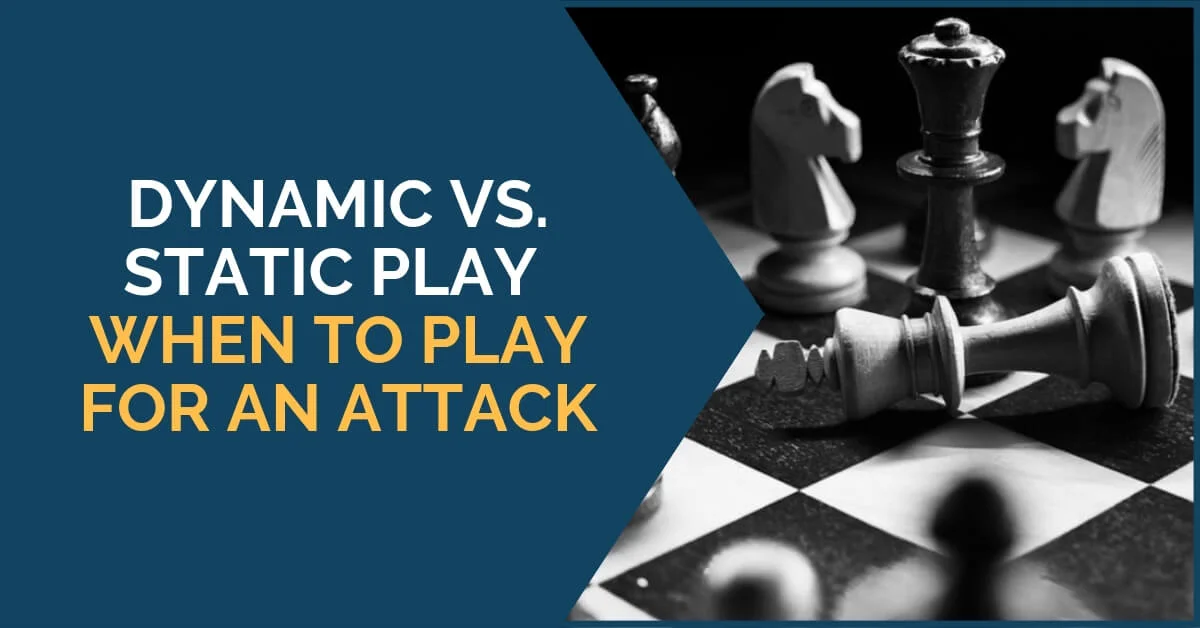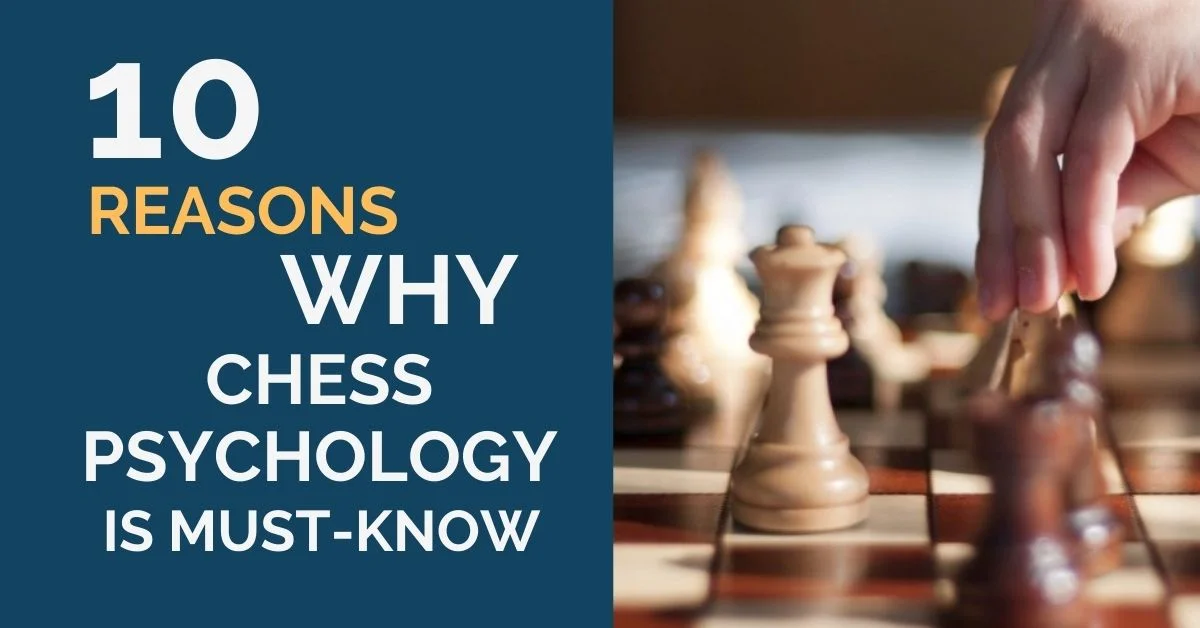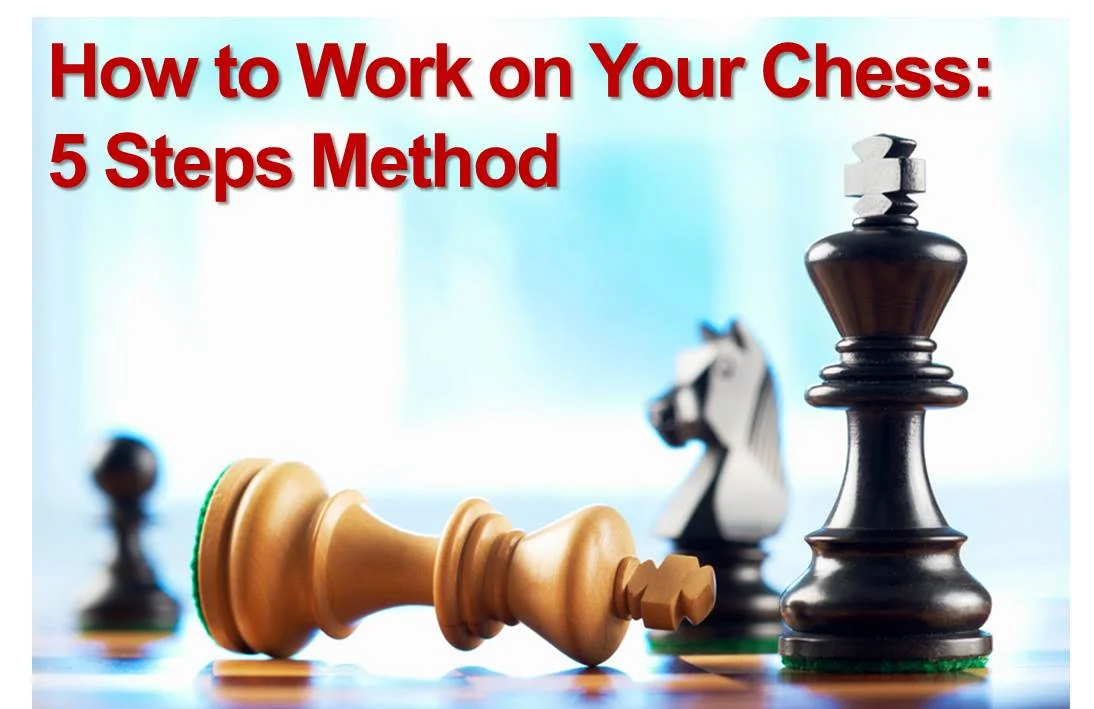Dynamic vs. Static Play – When to Play for an Attack

Dynamic vs. Static Play: Here are a couple of the questions we receive most often from our students. “When do I know when to play for an attack? And, when to stay quiet and follow the strategic path?”
You can always find the answer to this question by looking at the position you have in front of you.
There is no rule that tells you when to do one or the other. But, there are certain things in the position. They usually point to the path you have to follow during your game.
***
1. Dynamic vs. Static Play: Scan the position for tactical possibilities
This is something you should be constantly doing throughout the game. Misplaced or unprotected pieces, an open king, mating ideas – these factors are usually the triggers for sacrifices or simple tactics. Besides this, don’t forget about the typical sacrifices in certain types of positions!
2. An advantage in development
This factor is always a trigger for dynamic play since it is a short-term advantage. You have to act quickly. Otherwise, your opponent will get his pieces out, and get his king into safety. Also, your advantage will suddenly fade away.
In such positions, you have to play dynamic, and keep your opponent tied up. You also have to hit him with as many threats as possible. He will have to keep defending instead of developing, while you will have time to develop more pieces and build your attack. Here too, be on the look for tactics and be prepared to sacrifice material in order to open the rival king up.
3. Dynamic vs. Static Play: A weak king
If you weakened your opponent’s castle or his king is not safe, this is usually a sign that you can start an attack. However, you should make sure first that you have a good preparation for it. One of the most important rules is that you have to place your pieces on good squares so they can cooperate with each other.
Don’t just start throwing your pawns at your opponent; you may risk weakening your own position and end up being worse instead of getting the desired attack. If you want to find out more about this subject, make sure you read our previous articles on what to do before starting an attack.
4. The pawn structures
The pawn structure is an important feature throughout the whole game, as we normally build our plans around it. If you don’t know on which side to play during a game, it’s also the pawn structure that can tell you this.
In positions with a closed center, the pawns point out the flank where you should start taking action. For example, a pawn chain that is oriented towards the kingside, such as c3-d4-e5, indicates that you should play on the kingside. On the other hand, if the spear’s head is oriented towards the queenside (f3-e4-d5), then it’s on the queenside where you should look for dynamic ideas.
5. Dynamic vs. Static Play: The piece balance
Usually, if you have more forces on a flank than your opponent, it is safe to start an attack on that side. By forces, we don’t refer only to the pieces that are on that flank, but also those that point towards it.
Take a fianchettoed dark bishop on b2, for example. Even if it isn’t placed on the kingside, where you’d like to start an attack, it still can prove to be an important help to the rest of your army. However, make sure also that your opponent won’t be able to quickly regroup and fend off your attack easily.
6. You are worse from a static point of view
If you have many weaknesses in your position and you realize that you will be slowly, but surely outplayed by your opponent if you do nothing. Then, you should look for dynamic moves. Try to find counterplay at any cost and put problems for your opponent.
Want to know more about Dynamic Play? Look at this article. This may be interesting to you as well: When to Play Statically.
We also recommend reviewing Thinking Like a Chess Master as well as 10 Chess Coaching Ideas that Work.










Comments: